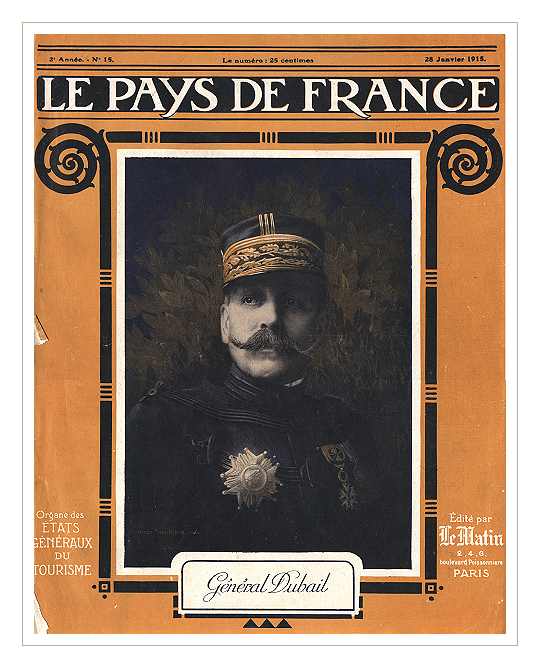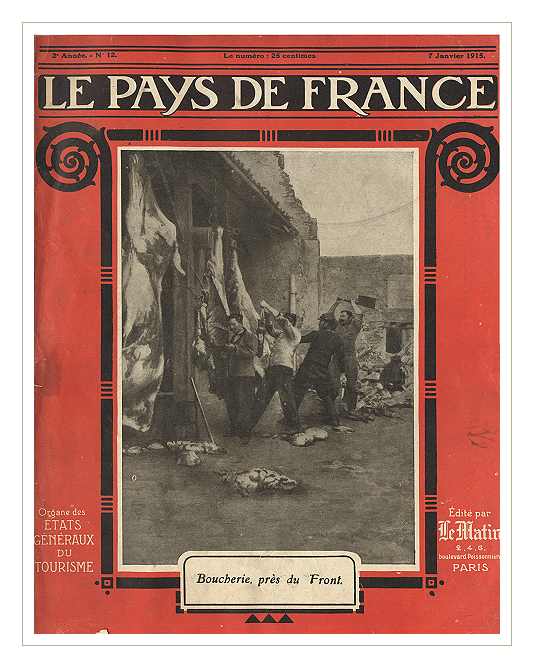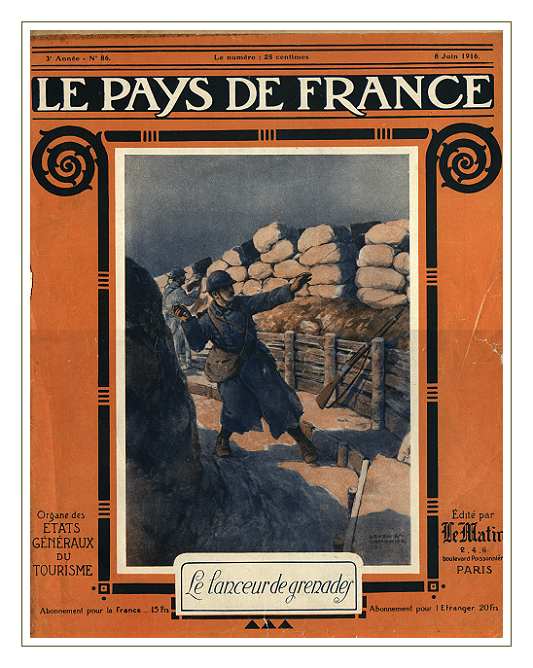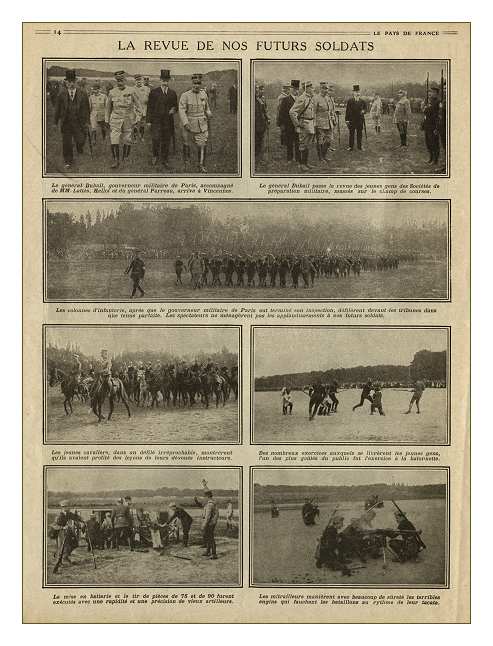
'Le Pays de France'

a Travel Magazine Turned into a War Weekly


several French generals


'Le Pays de France' ('the Country of France' or 'The French Countryside') started publication in June 1914 as a weekly tourist magazine published by the Estates General of Tourism in France and the newpaper 'le Matin'. But the outbreak of war foiled the well meant intentions of promoting tourism within the territory of France. Publication of the magazine was interrupted til November 1914 when new issues appeared weekly on the newstands. The publication was now transformed into a fiercely patriotic newsmagazine featuring a large assortment of human interest photographs pertaining to the war. Text was confined to explanatory captions and an article or two on yet another war-related subject. Cover pages were not very inspired, even though for a while commissioned patriotic illustrations were used. Otherwise the covers showed lacklustre, old-fashioned portraits of prominent military or political figures.
Generally speaking, the photographs were not so much informative as atmospheric and inspiring, but they were quite distinctive and original compared to those distributed by the larger newsagencies. The magazine paid for original, unretouched and authentic amateur photographs, which made for an intriguing variety of photographic material. A predominance of space was naturally given over to French subject matter, many photos featuring smiling, yet grimly determined poilus in every theatre of war, mainly in France but in the Orient as well. The Belgian army was covered quite extensively in porportion to their actual contribution to combat and upon American entry into the war, US Doughboys and their activities were a prominent feature in every issue. The British Army however was hardly mentioned and from a perusal of "Le Pays de France' one might get the impression that the British contribution to the war effort was on a par with that of a well-meaning fourth rate power and not overly much appreciated by the editors of 'le Pays de France'..
Somewhat perversely, but typical for French publications of the war years, the magazine seemed to delight in publishing photos of dead German soldiers, not shying the more grisly and gruesome views of mangled and disjointed corpses. In fact a careful counting might indicate that all through the war-years, more dead 'Boche' soldiers were portrayed in the magazine than live Tommies. (*see Corpses)
Each issue also featured a page of cartoons and caricatures, most humoristically quite incomprehensible to 21st century readers, not only because they refer to situations and events that were considered general knowledge at the time, but also because most of the 'jokes' and barbs at the expense of the German enemy were crude, tasteless, vindicative and childish to an extreme, if not to say without any redeeming value whatsoever. For all of its otherwise interesting and inspired illustrative content, 'Le Pays de France' will never be remembered for any achievement in the realm of humor.
The magazine was very popular during the war years but after the 1918 Armistice, and even more so after the signing of the Peace Treaty in 1919, the publishers tried to revert to their original intention of publishing a magazine for promoting tourism in France. Apparently this was not in keeping with the interests of the readers for in late 1919, publication ceased with subscriptions being taken over by 'Les Annales'.
Even though 'Le Pays de France' was granted but a short period of publication, during the war years it was very successful. The editorial policy of publishing a large number of amateur photographs taken at the front, makes for a unique and very atypical collection of war-time illustrative material, one which was distinctive and informative and allows modern day readers to form a different mental image of how things were during the days of 1914-18.

